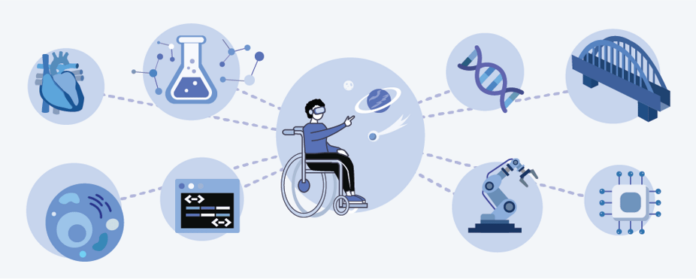As the effects of global warming become more apparent, one of the most alarming signs is the rapid melting of the Arctic ice caps. This phenomenon not only has immediate environmental impacts, but also has long-term consequences for the entire planet. In this blog post, we will delve deeper into the causes of Arctic ice cap melting, the environmental impact it has on the region, and its effects on wildlife and global climate patterns. We will also explore potential solutions and mitigation efforts that can help address this pressing issue.
Causes of Arctic Ice Caps Melting
The Arctic region is composed of land, ice and sea, with the ice acting as a crucial buffer between the ocean and the atmosphere. However, due to rising temperatures caused by global warming, this delicate balance is being disrupted. The most significant cause of melting Arctic ice caps is the increasing amount of greenhouse gases (GHGs) in the atmosphere. These gases trap heat within the Earth’s atmosphere, resulting in a phenomenon known as the greenhouse effect. This effect is essential in maintaining a livable temperature on our planet, but an excess of these gases can have catastrophic consequences.
Greenhouse Gases and Their Sources
The primary greenhouse gases responsible for the melting of Arctic ice caps are carbon dioxide (CO2), methane (CH4), and nitrous oxide (N2O). These gases are produced through human activities such as burning fossil fuels, deforestation, and agricultural practices. According to the Intergovernmental Panel on Climate Change (IPCC), CO2 emissions from fossil fuel combustion accounted for approximately 89% of the total GHG emissions between 1970 and 2010.
Other sources of GHG emissions include industrial processes, transportation, and waste management. In addition to human activities, natural sources such as volcanic eruptions and permafrost thawing also contribute to GHG emissions. However, human activities have accelerated the release of these gases, causing a significant imbalance in the Earth’s atmosphere and leading to global warming.
The Role of Feedback Loops
One of the most concerning aspects of Arctic ice cap melting is the presence of feedback loops that exacerbate the effects of global warming. A feedback loop is a self-reinforcing cycle in which the effects of an initial event are amplified over time. In the case of Arctic ice melting, one of the most significant feedback loops is the albedo effect.
The Arctic ice caps have a high albedo, which means they reflect a large amount of sunlight back into space. This helps keep the Earth’s temperature stable. However, as the ice melts, it exposes darker surfaces such as land and ocean, which absorb more heat and cause further melting. This creates a continuous cycle of melting and further warming, leading to more melting.
Environmental Impact

The melting of Arctic ice caps has severe consequences for the environment and ecosystems in the region. These impacts range from physical changes to the landscape to disruptions in the delicate balance of marine and terrestrial ecosystems.
Changing Landscapes
As the Arctic ice melts, the landscape of the region changes drastically. One of the most visible changes is the disappearance of permafrost, which is a layer of frozen soil that covers much of the Arctic region. The thawing of this frozen layer can cause land subsidence, leading to infrastructure damage and coastal erosion.
The melting of glaciers and ice sheets also contributes to rising sea levels, which can have devastating effects on low-lying coastal communities and island nations. Furthermore, the loss of sea ice means that there is less insulation for the ocean, resulting in warmer waters. This, in turn, affects ocean currents and weather patterns globally.
Disrupting Ecosystems
The Arctic region is home to a diverse range of species, many of which are adapted to the harsh, frozen environment. However, as the ice melts, these species are forced to adapt to changing conditions rapidly, leading to disruptions in their habitats and food sources. Polar bears, for example, rely on sea ice to hunt and travel. With less sea ice, they have a harder time finding food and may be forced to travel longer distances, putting them at risk of starvation.
The melting of Arctic ice also affects marine life such as walruses, seals, and whales, which depend on sea ice for breeding and feeding. The loss of sea ice can also lead to an increase in ocean acidification, which harms shellfish and other small sea creatures that form the basis of the marine food chain.
Effects on Wildlife

The melting of Arctic ice caps has significant impacts on wildlife in the region, from large marine mammals to tiny microorganisms. These effects ripple through the entire ecosystem, disrupting natural processes and potentially leading to extinctions.
Threatened Species
Polar bears are often seen as the poster child for the effects of global warming on Arctic wildlife. These magnificent creatures rely on sea ice to hunt seals, their primary source of food. As sea ice continues to melt, polar bears are forced to swim longer distances to find prey, leading to exhaustion and death. According to the World Wildlife Fund, it is estimated that there are only 22,000-31,000 polar bears left in the wild, and their population is predicted to decrease by up to 30% by 2050 due to continued sea ice loss.
Other species, such as the Arctic fox, depend on the presence of sea ice for their survival. As the ice melts, these animals face a lack of food and shelter, making it challenging to survive in the changing landscape. Furthermore, seabirds such as puffins and terns rely on sea ice as a resting platform while hunting for fish. With less sea ice, these birds have a harder time finding food and may suffer population declines.
Ocean Acidification
The melting of Arctic ice not only affects land-based species but also has a significant impact on marine life. As mentioned earlier, the loss of sea ice leads to warmer ocean waters, which have a direct effect on the delicate balance of marine ecosystems. Warmer waters can cause coral bleaching, a phenomenon in which corals lose their symbiotic algae, leading to starvation and death.
Furthermore, increased levels of CO2 in the atmosphere are absorbed by the ocean, causing ocean acidification. This process lowers the pH of seawater, making it more acidic and harmful to organisms that rely on calcium carbonate (such as shellfish and plankton) to build their shells and skeletons. This not only threatens individual species but also has cascading effects throughout the entire food web.
Global Consequences
The melting of Arctic ice caps not only impacts the local environment and wildlife but also has global consequences that affect the entire planet. From changes in weather patterns to disruptions in food systems, the impacts of Arctic ice cap melting are widespread and far-reaching.
Changing Weather Patterns
The Arctic region plays an important role in regulating global climate patterns through mechanisms such as ocean currents and the albedo effect. However, as the Arctic ice melts, this balance is disrupted, leading to changes in weather patterns worldwide. For example, the weakening of the Gulf Stream could lead to colder temperatures in Northern Europe, while the melting of permafrost in Siberia could release large amounts of methane, further contributing to global warming.
Furthermore, as the Arctic warms, it can also affect the jet stream, a high-altitude wind current that helps regulate weather patterns. Changes in the jet stream can result in extreme weather events such as heatwaves, droughts, and floods in different parts of the world.
Disruptions in Food Systems
The Arctic region is home to many important fisheries, providing food and income for communities around the world. However, as Arctic ice caps melt, these fisheries face significant disruptions. For example, in the Bering Sea, the loss of sea ice has led to a decrease in sea ice algae, a critical food source for fish and other marine life. This could have cascading effects throughout the entire food web, ultimately impacting the livelihoods of fishing communities.
Moreover, melting Arctic ice also affects the ocean’s salinity, which can have implications for ocean currents and the distribution of nutrients. This, in turn, can affect fish populations and the availability of food sources for larger predators such as whales and seals.
Solutions and Mitigation Efforts
Although the melting of Arctic ice caps is a complex issue with far-reaching consequences, there are steps we can take to address and mitigate its effects. These solutions range from reducing GHG emissions to implementing adaptation measures to help communities and ecosystems cope with changing conditions.
Reducing GHG Emissions
One of the most effective ways to combat Arctic ice cap melting is by reducing the amount of GHGs we emit into the atmosphere. This involves transitioning away from fossil fuels and towards renewable energy sources such as wind and solar power. Governments can also implement policies that promote energy efficiency and encourage industries to adopt low-carbon practices.
Individual actions also play a crucial role in reducing GHG emissions. This includes reducing our energy consumption, using public transportation or electric vehicles, and supporting companies and industries that prioritize sustainability.
Adaptation Measures
As climate change continues to impact the Arctic region, it is essential to implement adaptation measures to help communities and wildlife cope with changing conditions. For example, communities can build infrastructure that is resilient to coastal erosion and invest in technologies that help monitor and track changes in the environment. Governments can also support indigenous peoples and their traditional knowledge, which is vital in protecting the Arctic’s fragile ecosystems.
Adaptation measures can also focus on protecting at-risk species such as polar bears by regulating hunting and implementing conservation initiatives. Furthermore, measures can be taken to ensure that fisheries are managed sustainably to maintain healthy fish populations despite changing conditions.
Conclusion
The melting of Arctic ice caps is a complex issue that requires urgent action from governments, industries, and individuals. The consequences of this phenomenon not only impact local environments and wildlife but also have far-reaching effects on global climate patterns and food systems. By understanding the causes and consequences of Arctic ice cap melting, we can work together to implement solutions and mitigate its effects. From reducing GHG emissions to implementing adaptation measures, we all have a role to play in addressing one of the most pressing issues of our time. Let us take action now before it is too late to save the Arctic and its invaluable ecosystems.









